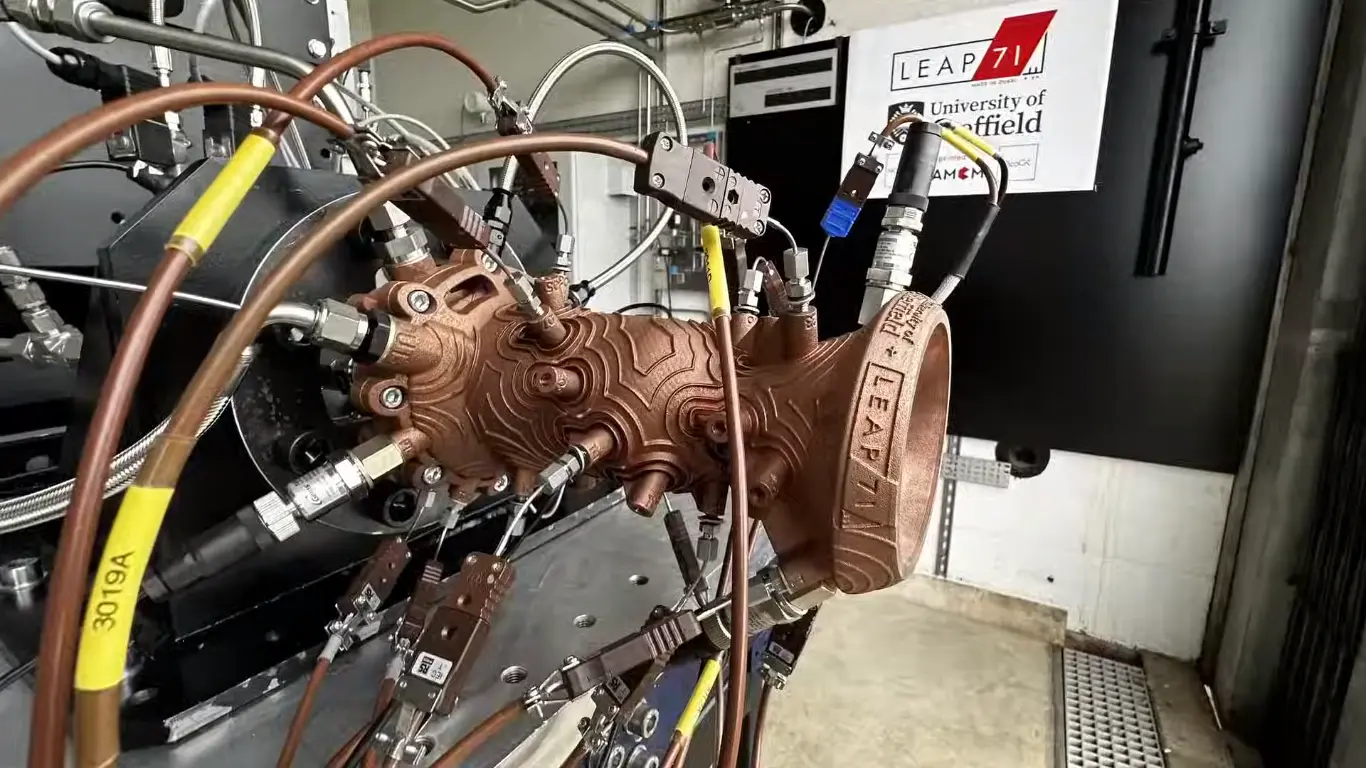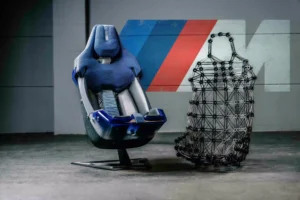″LEAP 71 has successfully tested a liquid-propellant rocket engine developed using Artificial Intelligence and 3D printing, completing the process in just two weeks. This breakthrough, powered by their Noyron software, could revolutionize aerospace engineering by drastically reducing development time and potentially making space technology more accessible.‶
In a groundbreaking achievement that underscores the transformative potential of artificial intelligence & 3D printing in aerospace, Dubai based company LEAP 71 has successfully developed and tested a liquid propellant rocket engine. This innovative project, completed in a remarkably short timeframe, showcases the power of combining advanced computational engineering with additive manufacturing techniques.
At the heart of this achievement lies LEAP 71’s proprietary software tool, Noyron. This AI-powered system automates the implementation of logical and physical processes in manufacturing, eliminating the need for traditional CAD design. The result? A fully computer-controlled development process that produced the TKL-5 rocket engine model without human intervention.
The impact on production time was significant. From final specification to manufacturing, the entire process took less than two weeks – a feat that would typically require months or even years using conventional engineering methods. This dramatic reduction in development time could have far-reaching implications for the aerospace industry, potentially accelerating innovation and making space technology more accessible.
On June 14, 2024, the engine underwent its first test in Wescott, UK, performing successfully on its inaugural run. The compact TKL-5 engine, suitable as the final stage of an orbital rocket, boasts impressive specifications. With a thrust of 5 kN, it can lift a mass of 500 kg – equivalent to 20,000 horsepower.
LEAP 71 didn’t work in isolation on this project. The engine was printed on an EOS M290 by AMCM, a German leader in 3D metal printing. Copper was chosen as the primary material, enabling the creation of powerful engines with active cooling capabilities. The “Race to Space” team from the University of Sheffield provided valuable feedback and handled post-processing before the engine’s first test at Airborne Engineering’s facility.
The engine’s design incorporates sophisticated features that set it apart . It uses cryogenic liquid oxygen and kerosene for propulsion – a challenging but deliberate choice. The kerosene serves a dual purpose, providing both propulsion & cooling by circulating through thin ducts, preventing the engine from melting despite combustion temperatures reaching 3000°C.
Monitoring capabilities are another key aspect of the design. Numerous connections for measuring temperature and pressure allow data to be fed directly back into the Noyron calculation model. This data-driven approach enables continuous refinement of the model & further development of the software. Remarkably, Noyron can create new design variants of the engine model in less than 15 minutes, which can then be rapidly produced and tested.
Josefine Lissner, Aerospace Engineer & Managing Director of LEAP 71, emphasized the significance of this achievement: “This is an important milestone for us and the entire Industry. We can automatically create functional rocket thrusters & directly move to practical validation… With our approach, we hope to make space more accessible for everyone”.
This successful test marks a significant step forward in the application of Artificial Intelligence & 3D printing in aerospace engineering. By dramatically reducing development time & costs, LEAP 71’s approach could pave the way for more rapid innovation in space propulsion technology. As these technologies continue to evolve, we may be witnessing the dawn of a new era in pace exploration – one where the barriers to entry are lower and the pace of progress is faster than ever before.
Read more recent news:
- SpaceX Space Launch: Nova C with 3D printed engine heads toward Moon’s south pole
- 3D Printing Breakthrough: Children Breathe Easy with New Splint
- From Tiny Parts to Mega Structures: 3D Printing Takes Space Construction to New Heights
- Ireland’s First 3D Printed Homes Emerge in Dundalk, Signaling Construction Revolution
Nikko Jenkins is a technology journalist based in the US, covering tool reviews and comparisons across North America, Europe and Asia, particularly 3D Printers. His concise, insightful articles on the latest innovations help readers worldwide make informed tech decisions. Jenkins’ expertise and engaging style have made him a respected voice in the global technology landscape.
Feel free to reach out to me at nikkojenkins@360techinsights.com.




